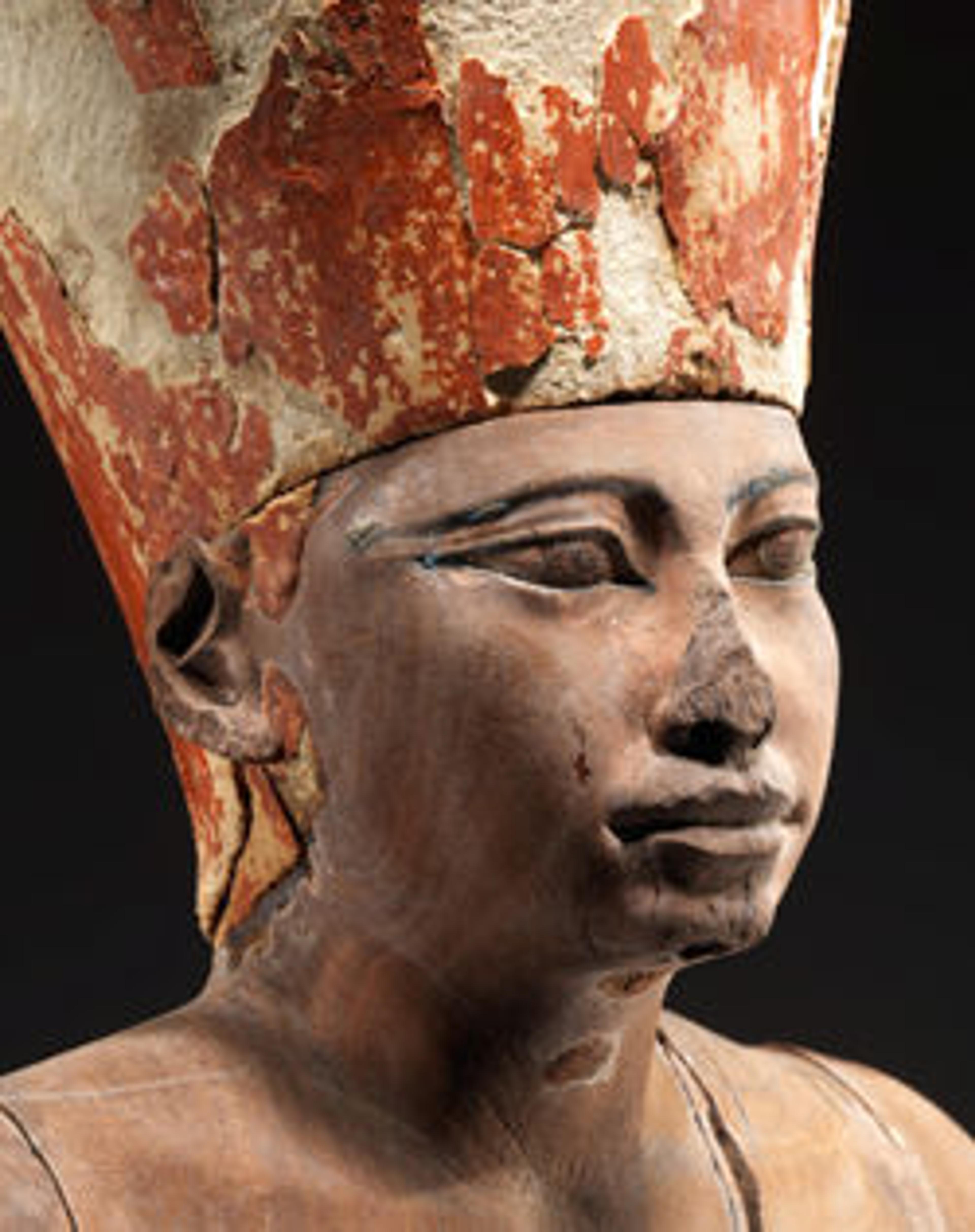Relief from the Chapel of the Overseer of the Troops Sehetepibre
The "overseer of troops" Sehetepibre, son of Satankhu was the owner of a commemorative chapel which housed two relief slabs in the collection (65.120.1, 65.120.2). On these slabs, he is seen seated at an offering table, but he and his family are also depicted as mummies.
Although Egyptian hieroglyphs could be written in either direction, the preference was right to left. Thus, the list of Sehetepibre's family begins on slab (65.120.2and continues on this slab with (at right) Djehutihotep, son of Iti; Gifit ("the monkey"), daughter of Djedes; and Sehetepibre, son of Djedes. Although their exact relationship to Sehetepibre is not always clear, all of these individuals were probably members of his family.
Although Egyptian hieroglyphs could be written in either direction, the preference was right to left. Thus, the list of Sehetepibre's family begins on slab (65.120.2and continues on this slab with (at right) Djehutihotep, son of Iti; Gifit ("the monkey"), daughter of Djedes; and Sehetepibre, son of Djedes. Although their exact relationship to Sehetepibre is not always clear, all of these individuals were probably members of his family.
Artwork Details
- Title: Relief from the Chapel of the Overseer of the Troops Sehetepibre
- Period: Middle Kingdom
- Dynasty: Dynasty 13
- Date: ca. 1802–1640 B.C.
- Geography: From Egypt
- Medium: Limestone, paint
- Dimensions: H. 30.5 cm (12 in.); W. 42.5 cm (16 3/4 in.); Th. 10.6 cm (4 3/16 in.)
- Credit Line: Rogers Fund, 1965
- Object Number: 65.120.1
- Curatorial Department: Egyptian Art
More Artwork
Research Resources
The Met provides unparalleled resources for research and welcomes an international community of students and scholars. The Met's Open Access API is where creators and researchers can connect to the The Met collection. Open Access data and public domain images are available for unrestricted commercial and noncommercial use without permission or fee.
To request images under copyright and other restrictions, please use this Image Request form.
Feedback
We continue to research and examine historical and cultural context for objects in The Met collection. If you have comments or questions about this object record, please contact us using the form below. The Museum looks forward to receiving your comments.
